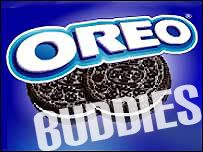
The Artist
Vicente Manansala was born in Pampanga in 1910 and studied at the U.P. School of Fine Arts and later continued to study in Canada and Paris. He started out with creating abstract images from realistic ones, but never attempting to discard the initial one. Later, Manansala dabbled with abstract images, which paved the way for the concept of “cubism” which basically is, “reducing reality into images” (http://www.lopezmuseum.org.ph/gallery_manansala.html). He died in 1981 and was only regarded as a National Artist after his death in the same year.
Market Scene
There was no prevailing ideology that influenced his art, he only believed in the power of the artist to recreate reality according to what he feels and not only on what he sees. Art, for him, was a representation of the general reality, only made personal by the artist himself. It was a communication between the reality, the artist and the colors that would breathe life to an idea.
For my part, I chose his Market Scene painting, painted in 1975. It is one of his paintings which employed “cubism” as manifested by the angles and planes floating around to form the whole picture through different shades and colors. In his painting, the edges of the cubes were made lighter and softer to create emphasis on the picture he was portraying, thus his “transparent cubism” technique. If the edges had been sharp, then his art would be reduced into an abstract image, a form of art that he had revolutionized by fusing realism and cubism.
He might not be a genius as Juan Luna and Felix Resurreccion Hidalgo were, but his use of “cubism” in the Market Scene made him unique from all his contemporaries. His painting was brilliant, with the blending of colors into shadows and shades into textures to make a picture in an otherwise abstract figure. Cubism is generally defined as the tweaking of a picture to create an abstracted representation but with Manansala’s art he fused these abstracted cubes to form one picture.
In addition, the use of cubes and planes in his painting contributed to the balance and asymmetry of colors and the painting itself. It is not too heavy, nor is it too light. Although the colors range from orange to black, the shades of blue and white make it easy to the eyes.
The emphasis lies on the life at the market area, an everyday activity. But here, Manansala made use of the traditional baro’t saya of the women, something which did not exist in the mid-70’s. Here, it can be clearly deduced that while he had moved on from doing abstracted paintings, he had not let go of his belief that art could be something else other than reality itself.
The Colors and Art
I liked how the orange and blue blended well together through the different shades and colors. Somehow, it looked so orange and dark to me, but looking at it closely, I realized that there were other shades other than yellow and orange. It took a while before the blue color registered and I regard this as a bad thing. Although they blended well together, the shades of blue were offset by the strong yellow and orange shades.
In the same vein, Manansala’s “Jeepneys” painting was characterized by strong shades of orange that filled the transparent geometric planes of his art. In “Jeepneys”, he used different shades of orange to convey the polluted area of Manila, as well as the heavy traffic that characterizes a typical city in the Philippines. To quote, “filling up the entire pictorial space, Jeepneys successfully conveyed the feeling of heat, pollution, noise and claustrophobia caused by the city’s menace – traffic” (http://www.ncca.gov.ph/about_cultarts/comarticles.php?artcl_Id=169). In the same way, Manansala employed the colors of orange, yellow and brown to show the typical market scene in the Philippines which is generally described by housewives as busy, dirty and “populated”. This image evokes the stench of dead pigs as their carcasses were hung upside down and of the stink of the freshly-caught fish while buzzes of shouts and conversations fill the air.
The Time Span
Although painted in the year 1975, Manansala’s painting was a reflection of his own time. It seemed like a depiction of a long-lost Spanish era, but Manansala’s painting was a reflection of his era, the American period, as manifested by the traditional clothes worn by the women in his painting. In 1910, life in the Philippines is on its way to modernity under the American regime. No longer were we slaves of the Spaniards, but we were under the “spell” of the Americans. In my own opinion, he painted this in 1975 to depict the ever-changing traits of the Filipino women and also to serve as a reminder of the era that’s passed.
He grew up in an environment where women were the traditional Maria Claras, but by the entrance of the “retro” period, women became undoubtedly freer and more liberal in terms of fashion, career and world view. Women served two purposes: as a household caretaker and as well as a career woman. I think Manansala wanted to bring back the time wherein women were basically caretakers of home. - ALEXIS LAURA FELICIANO
Photograph Source:
http://iloko.tripod.com/Manansala/Marketscene_Manansala.jpg


No comments:
Post a Comment